Discover South Africa's forgotten city, gateway to soaring mountains and incredible beaches
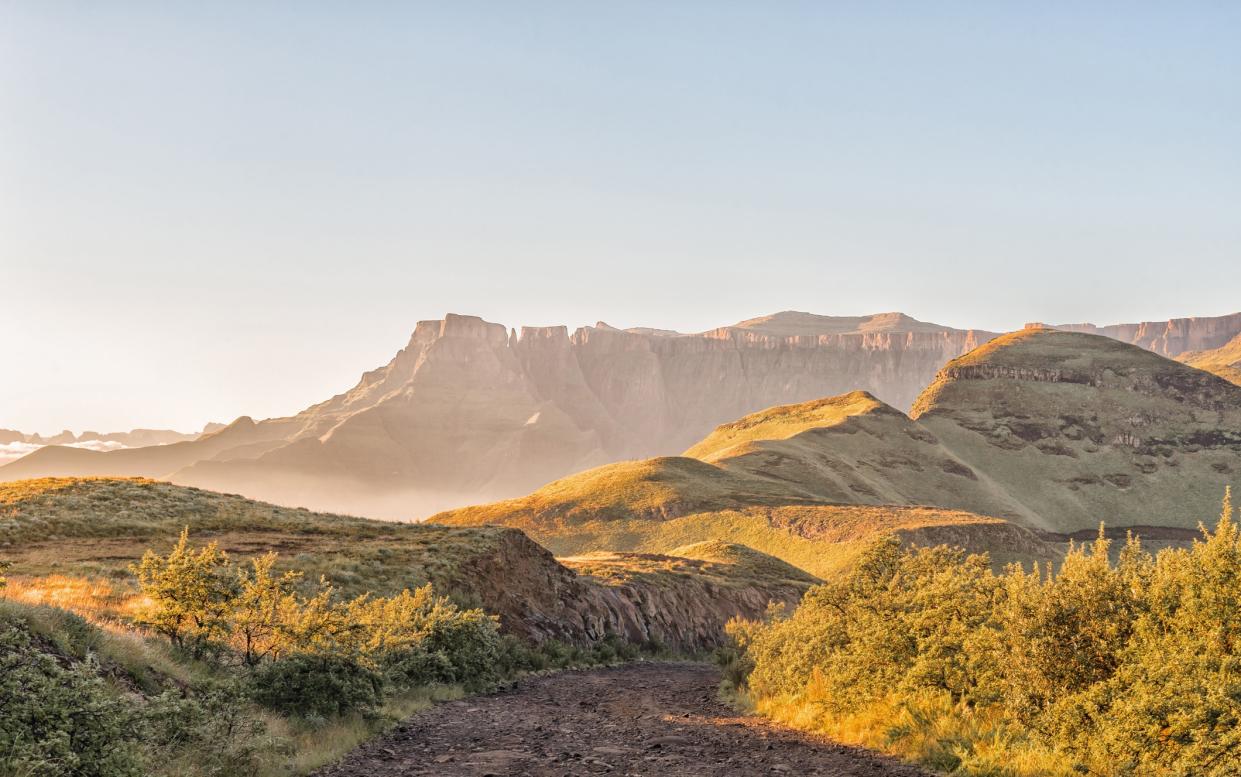
Suddenly South Africa’s Cinderella city and its surrounds are back on the menu. With the introduction at the end of this month of direct British Airways flights between London and Durban, my old stomping ground is in the news again.
Durban is the principal urban hub of KwaZulu-Natal (KZN), a largely rural province the size of Portugal, made up of rolling green hills, soaring mountain ranges and a long, dramatic coastline that runs up to the Mozambique border. It is known as the Garden Province because of its rich diversity of flora and fauna, from the subtropical thickets of the steamy coastal region and the moist grasslands of the midlands to the savannah and alpine expanses further north.
Historically, KZN is the home of the Zulu nation, who under leaders like Shaka and Mpande waged unrelenting war on rival tribes through the 19th century, only to be subdued by the British colonial invaders at the end of that century. In the apartheid years it was just plain Natal, and was seen as “the last outpost of the British Empire,” as the proudly Natalian Springbok rugby player and Oxford blue, Tommy Bedford, once put it.
Bedford said that as he was formally welcoming the visiting British Lions rugby team to Durban in 1974, but it also reflected the province’s secessionist tendencies at a time – in the Sixties and Seventies – when Afrikaner-led granite apartheid lay like a suffocating blanket across the country. Politically prominent Natalians were expat British (who shared the province with the majority Zulus and the commercially important Indians) with a sense of fair play. Most found apartheid brutish and longed for the end of Afrikaner rule.

I lived here in those times, firstly as a university student and then as a newspaper journalist in the Seventies, during the region’s most turbulent political days. Inspired by a political science lecturer named Dr Richard Turner (who was later assassinated by agents of the state on his doorstep, in front of his young daughters), a group of young law students helped unionise the black workers in Natal, and began to expose significant cracks in apartheid’s edifice. As a chronicler of these events – my friends were the radical young lawyers – I was declared an “undesirable alien” by the apartheid government and deported to Britain. A close friend was on trial for treason, and theoretically faced death, for running a “Free Mandela” campaign. Heavy stuff, as we used to say.
What I would miss most about Durban and Natal in my years of exile in the UK was not the political war into which the whole country had been drawn but the more sybaritic lifestyle that this Last Outpost offered.
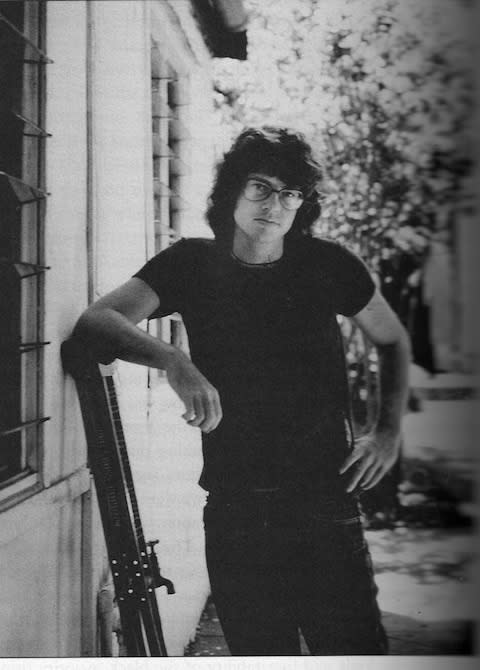
In summer Durban was hot, humid, clammy and we would flee up the North Coast past the rolling sugar-cane fields to loll around on the empty beaches of Shaka’s Rock, Umhlanga and Umdloti and swim and ride the waves in the warm Indian Ocean. Or we would head inland, up-up-up, past the Valley of a Thousand Hills, to the cooler climes of the Drakensberg mountains where the streams delivered the sweetest water I have ever tasted and the cool night air caressed your skin like gossamer.
In the gently warm winter months, when there was no humidity, we would hang around the neatly arranged, architecturally impressive city centre, where the nightclubs rocked to the sound of Durban’s top rock groups and the sweet smell of Durban Poison, the famous local marijuana strain, hung in the air. This was a truly gilded youth, and we were privileged, protected young whites who saw ourselves as musicians, poets, dreamers and, reluctantly, political activists.
Today, the centre of the country’s third city (after Johannesburg and Cape Town) seems somewhat faded. Where once there were wide empty pavements running alongside the sturdy colonial edifices, now you find trash-lined streets with market traders elbow to elbow. Fallen buildings remain rubble-strewn shells.
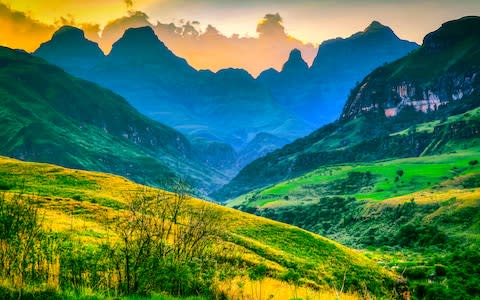
Rather than lingering here, my advice is to head out to Umhlanga Rocks, which seems to have taken over as the new city centre. The North Coast begins at Umhlanga and over the past 20 years it seems that most of Durban’s affluent citizens have migrated out here, miles from the city centre.
Taking pride of place in Umhlanga is The Oyster Box, one of South Africa’s best hotels. Actually, it is one of Africa’s best hotels, and what I like most about it is the sense of old world courtesy, the high teas, the formal restaurants and the general ambience of the place. Some might balk at the pith helmets worn by staff, but – fashionable or not – this is a hotel that positively celebrates South Africa’s colonial legacy.
A half-hour drive up the North Coast takes me to Tinley Manor, one of a series of hamlets that used to be the preserve of the sugar-farming industry but now caters for a new generation of tourists. I am here for lunch at Impulse by the Sea, one of the most widely praised curry restaurants in KZN.
Durban curry has become one of the province’s USPs and the old arguments about how to end apartheid have been replaced by equally vociferous debates about which restaurants serve the best example. Impulse By The Sea certainly serves up the best prawn curry I’ve ever tasted, perfectly spicy, hot but not eye-wateringly hot – and, as they say here, “so much of flavour”.

Beyond Tinley Manor this road north of Durban takes you past the old sugar towns, and if you keep driving you eventually reach Umfolozi and Hluhluwe. These are two of the oldest proclaimed nature reserves in Africa and were made famous in recent decades by the wildlife conservation successes of the late Dr Ian Player. It was here that, in the Sixties and Seventies, Player and his Natal Parks team brought the rhino back from the brink of extinction.
Today there are an estimated 17,000 white rhino in South Africa, most of them in these parks, and although there is some rhino poaching, as there is across Africa, the Umfolozi-Hluhluwe conservation story is a rare success. The two conjoined parks now flourish and, although not as well known as Kruger to the north, they boast the Big Five (lion, leopard, elephant, rhino, buffalo) and have excellent lodges and guides (see below).
Back in Durban I take a dawn stroll along the stretch of beach known as The Golden Mile. The Indian fishermen are out in serious numbers but don’t seem to be having any luck. “Nothing’s biting today,” one of them says, then laughs. “And this time we can’t blame the politicians.”
The most positive description offered of the colourful diversity of this city comes from Clinton Friedman, a local photographer, graphic designer, surfer, mountain biker and typical Durbanite. “You go to the beach in your wetsuit with your surfboard and there’s an oke [person] slaughtering a chicken, and another getting dumped on to the sand by the shore break, and another throwing a fishing line into the water to catch shad. Where else do you get this?”
Where else indeed.
Graham Boynton travelled with Africa Travel (020 7843 3580; africatravel.co.uk), which can arrange a seven-day trip to KwaZulu-Natal from £2,395 per person sharing, staying for four nights with breakfast at the Oyster Box Hotel and two nights including all meals and safari activities at &Beyond Phinda Mountain Lodge. Also included are all transfers and direct return flights from London with British Airways.
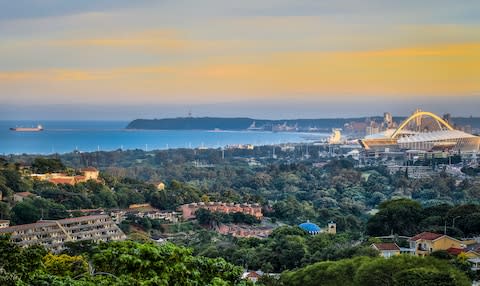
Getting there
From Oct 29, British Airways (0344 493 0787; ba.com) will fly three times a week between London and Durban on a 787 Dreamliner. Return from £599 (World Traveller), £1,214 (World Traveller Plus) and £3,199 (Club World).
Where to stay
Luxury: The Oyster Box is on the Umhlanga beachfront beside the lighthouse. Staff are superb, food is outstanding and at £297 a night this is luxury at a bargain price.
Budget:Sandals Guest House (0027 31 561 3973; sandalsumhlanga.co.za), at Umhlanga Rocks, has six rooms and is within walking distance of the Oyster Box, the centre of Umhlanga and the beach. Clean, quite modern and serves breakfast in a small dining area; £134 for two people sharing.
Best beaches
The whole KwaZulu-Natal coast, from Margate in the south all the way up to Rocktail Bay in the far north, has wonderful beaches. The Golden Mile is the stretch right in front of Durban, but for isolation and splendour head north to Tinley Manor, Ballito Bay and Shaka’s Rock.

Best battlefield tour
Fugitives Drift, family home of the late David Rattray (00 27 34 271 8051; fugitivesdrift.com) is now a spacious lodge where guests can stay while doing the famous escorted tours of the two great Anglo-Zulu battle sites – Isandlwana, where the Zulus routed Lord Chelmsford’s army, and Rorke’s Drift, where a handful of brave British saw off the might of the Zulu impi. David’s sons, Andrew and Douglas, are among the tour leaders and show similar flair to the great storyteller himself. Accommodation from £150 to £250 per person per night; tours cost £70 for both sites.
Best wildlife experiences
Phinda Private Game Reserve (andBeyond.com) is set in 69,000 acres of varied terrain comprising thick bush, riverine forest, rocky outcrops and sand forest. A series of luxurious lodges house guests, and prices start at £575 per person per night all-inclusive, including game drives.
Umfolozi Big Five Game Reserve by Mantis (00 27 41 404 9300; mantiscollection.com) has just opened this month in a 15,000-acre private park. Prices start at £575 per person per night all-inclusive but there is a “stay three nights and pay for two” offer running until April 2020.
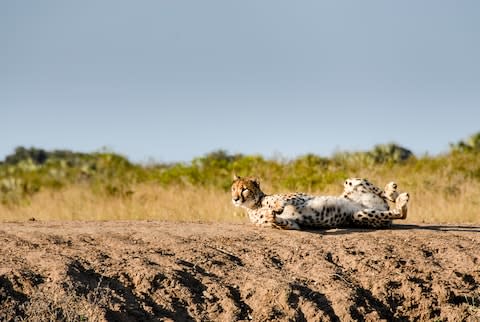
Best places to eat
Luxury:The Oyster Box Hotel’s Grill Room (00 27 31 514 5000; oysterboxhotel.com) offers old-world elegant dining at its best. Dishes such as steak diane (£16), prawns (£11) and succulent crayfish (£12) are haute cuisine at bargain prices.
Budget: Britannia Hotel (00 27 31 303 2266; hotelbrits.co.za), located under a freeway, has unprepossessing décor and somewhat lackadaisical staff – but the curry is superb and ridiculously cheap. A meal for three, including wine, came to just £19.
Impulse by the Sea, Tinley Manor (00 27 32 554 4626) does the best prawn curry I had on my trip – and is well worth the 40-minute drive from Durban. Lunch for two, including wine, cost £23.
Best read
Having sampled Durban’s curry, you’ll want to take home a copy of Durban Curry: So Much of Flavour by Erica Platter and Clinton Friedman. It has history, wonderful narrative storytelling and a collection of recipes from the best chefs.
Best nightlife
The Chairman (00 27 79 753 6313) is a cool jazz bar located in what was once Point Road (now Mahatma Ghandi Road), in a slightly rundown part of the city. Get an Uber there and back. Zack’s (00 27 31 312 0755), in the more salubrious Windermere, at 115 Lilian Ngoyi Rd, can be fun – if you’re not too demanding of your musical entertainment. Friday nights are best, when one of Durban’s most celebrated rock stars, Steve Fataar, leads a gaggle of old toppies [veteran musicians] through easy-on-the-ear covers.


